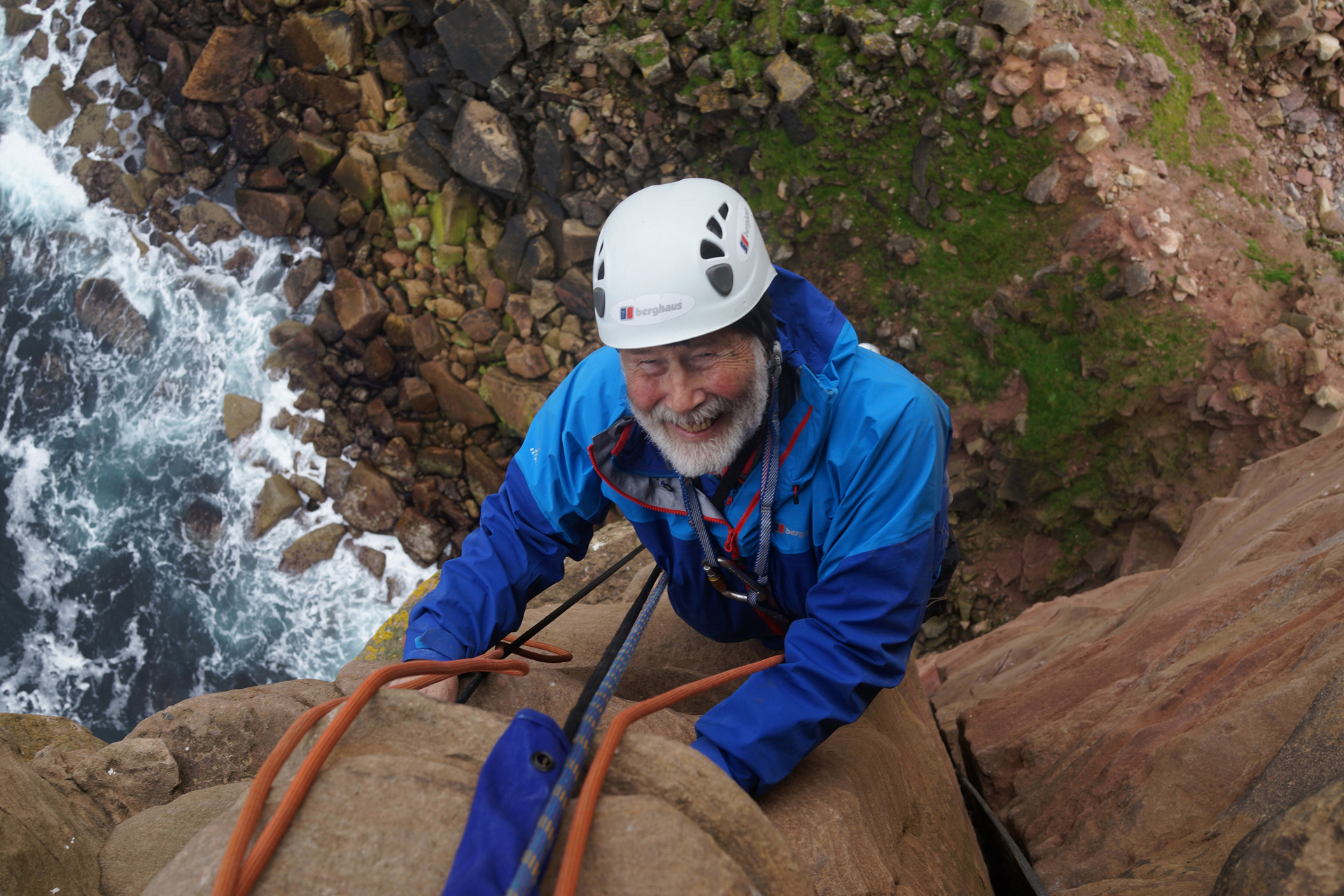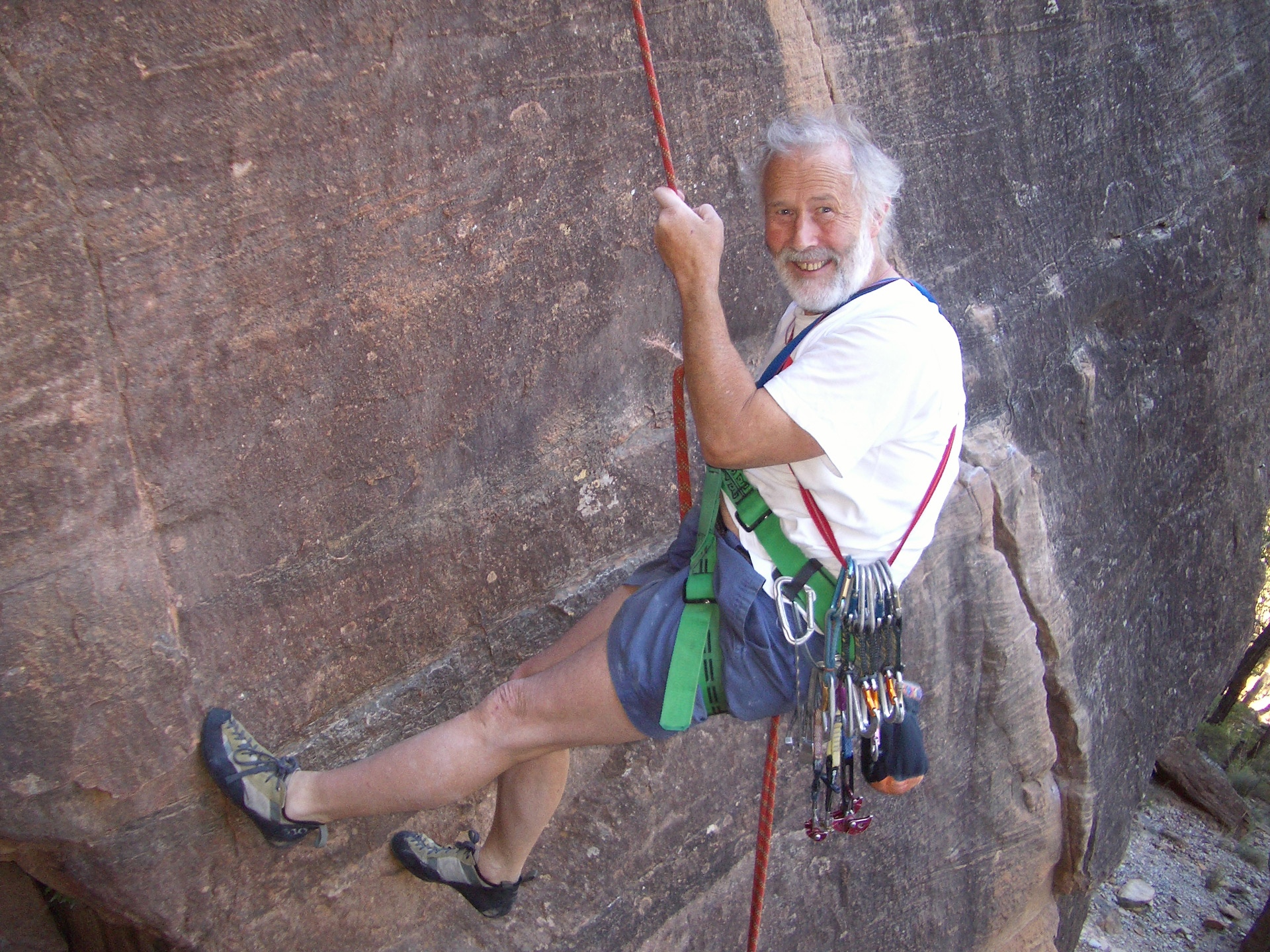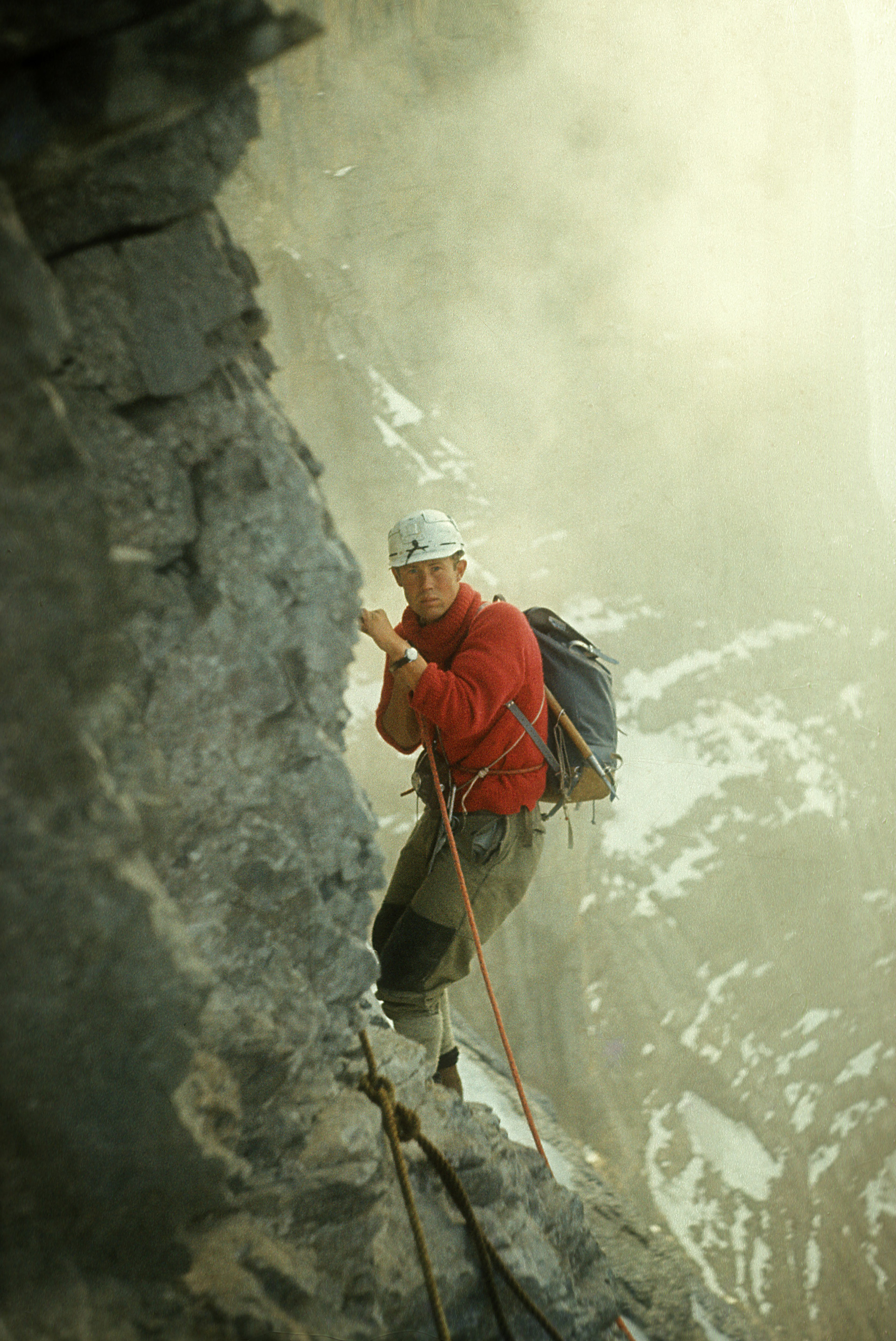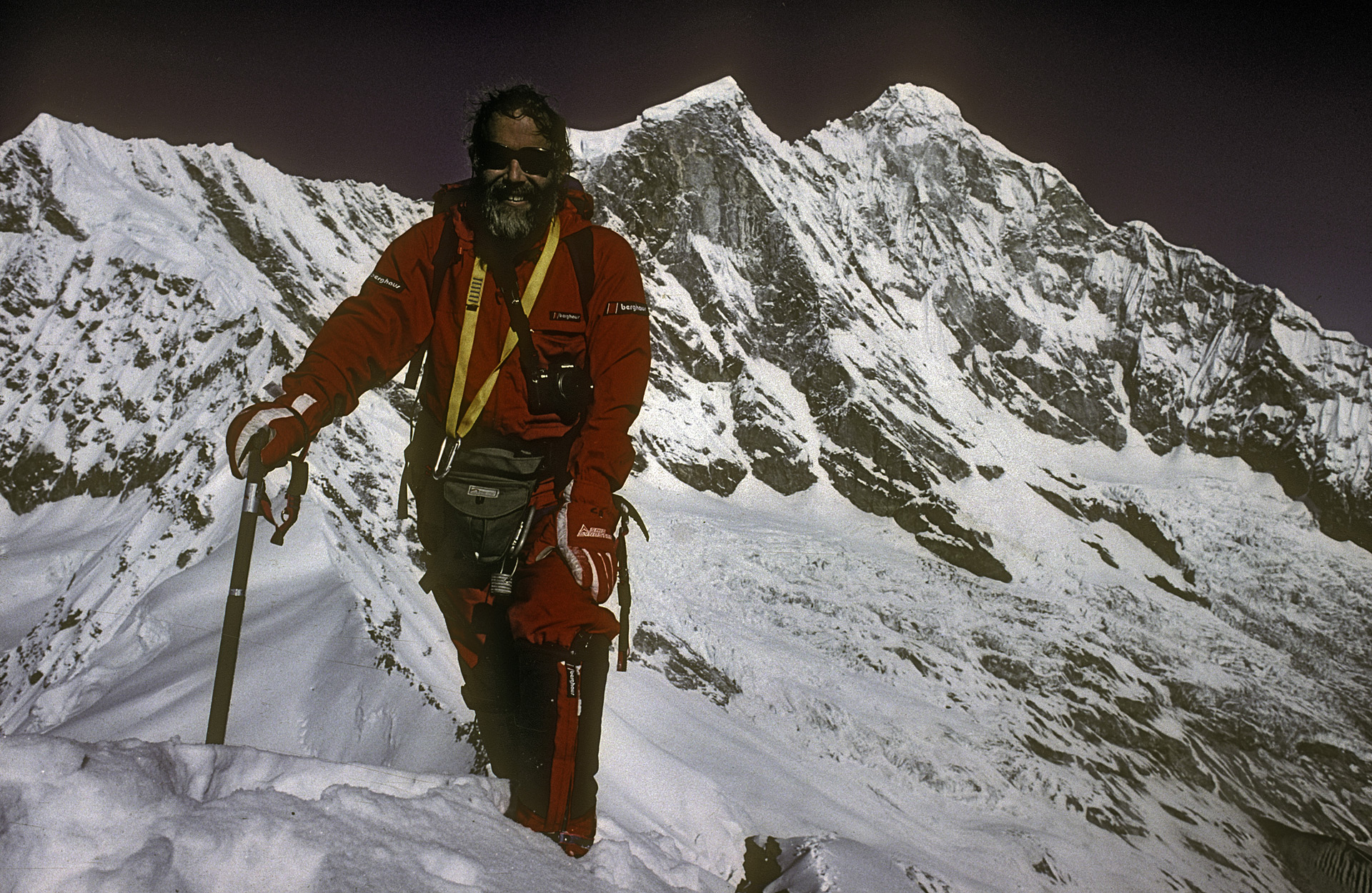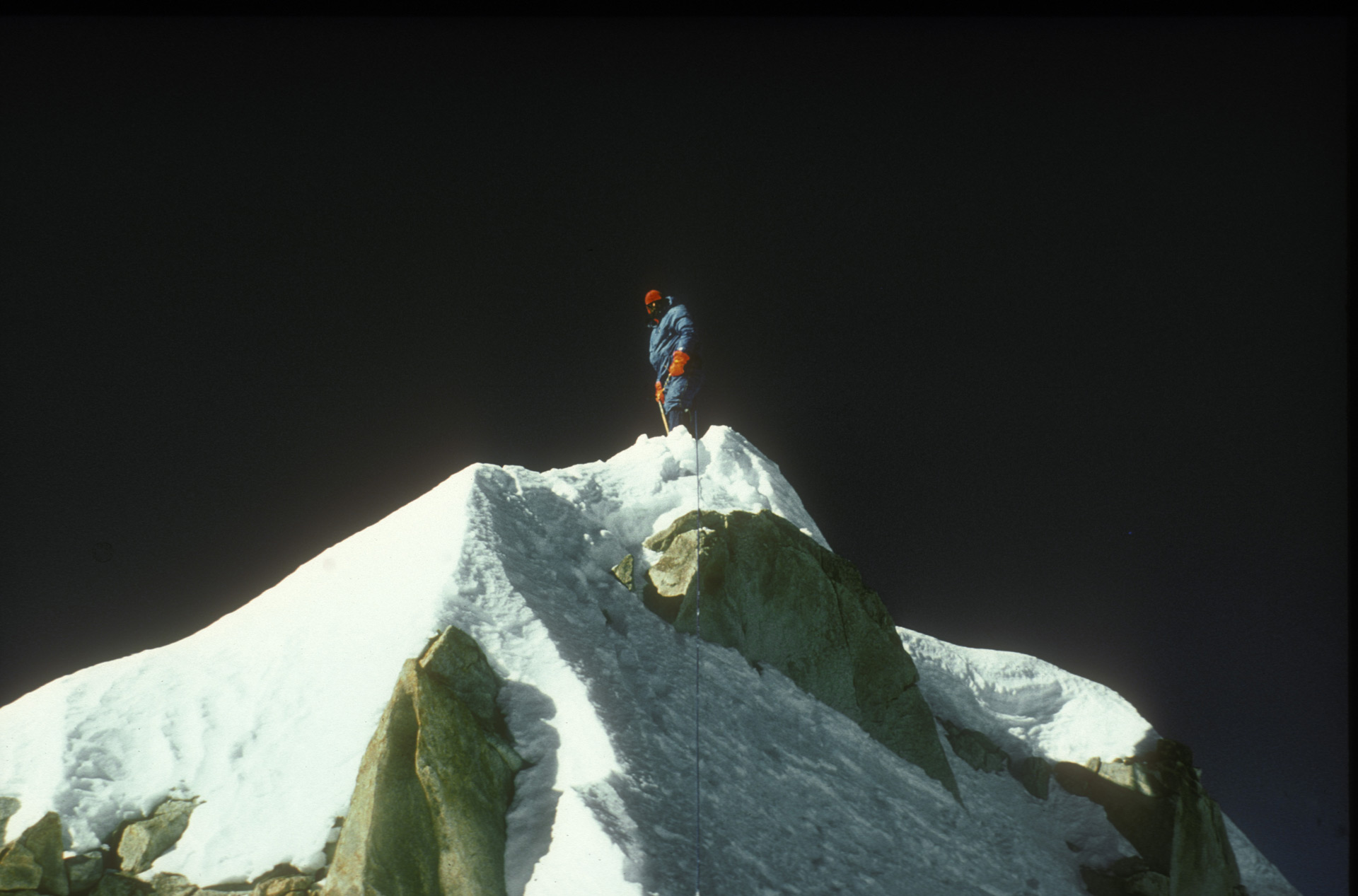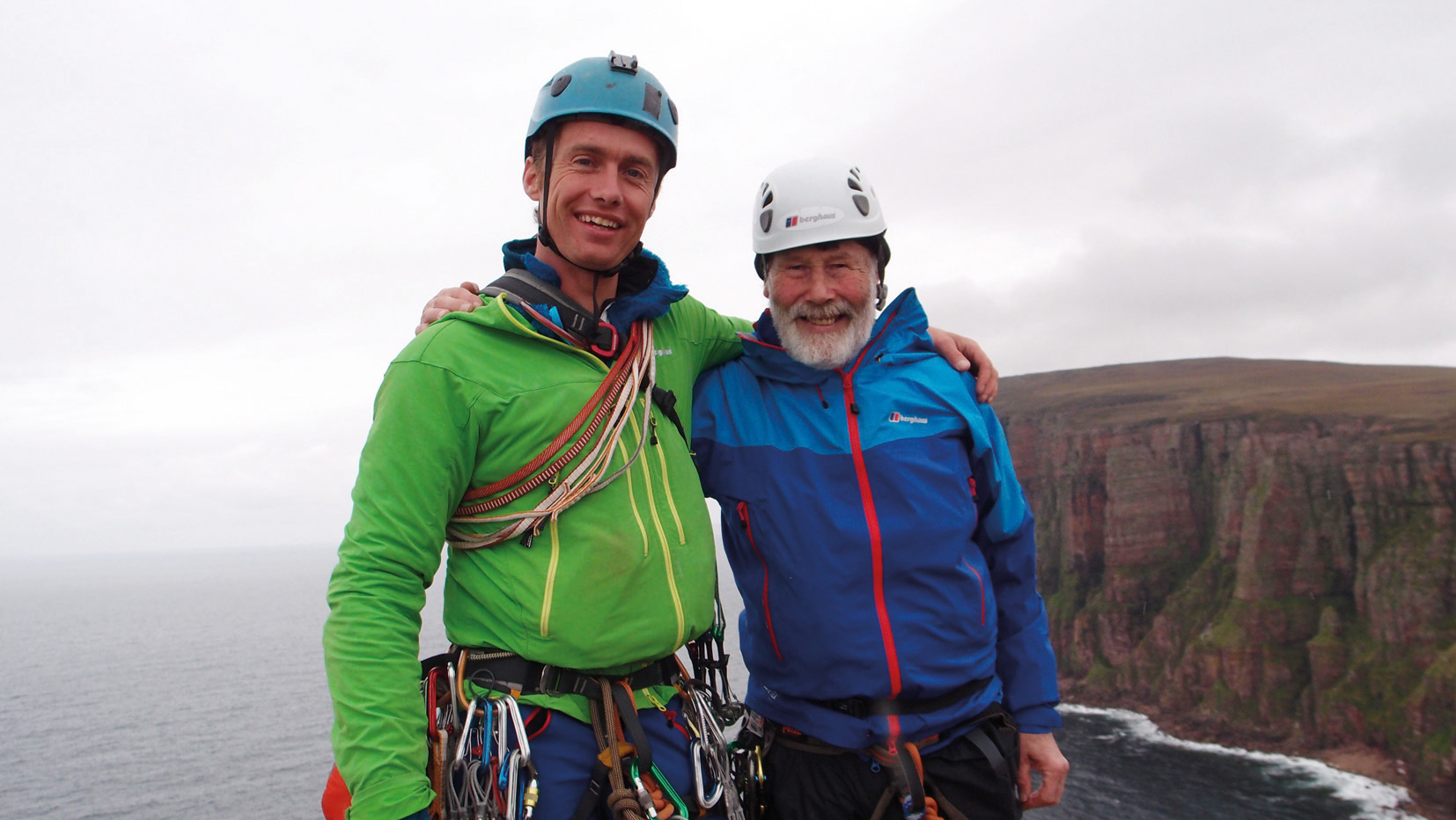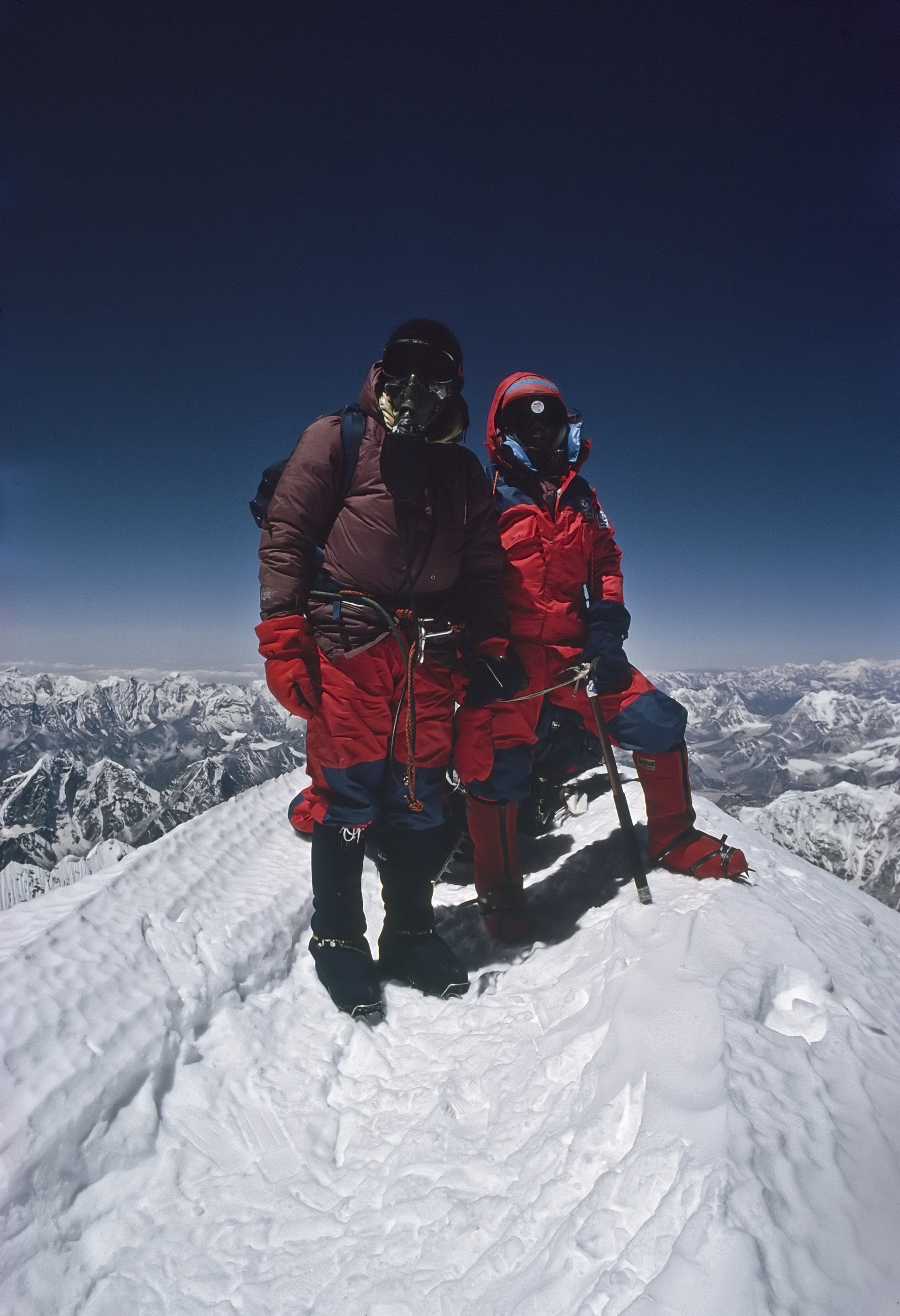Words by Sam Haddad | Photos courtesy of the Chris Bonington Picture Library
Losing someone you love can send you to a pretty dark place. But in the case of Sir Chris Bonington, arguably Britain’s most important mountaineer of the past century, grief can also take you somewhere a lot less expected. Namely to the Old Man of Hoy, a precarious sandstone sea stack 150 metres high in the sky above the Orkney archipelago.
83-year-old Bonington has twice suffered from a serious bereavement. First in 1966, when he lost his three-year-old son Conrad in a drowning accident, and then in 2014 when Wendy, his wife of 50 years, died from Motor Neurone Disease. Each time a climbing friend, first Tom Patey and later Leo Houlding sought to lift him from his deep anguish by suggesting they climb the iconic rock tower in northeastern Scotland.
“I sought consolation in this wild and lonely place…”
When his son died, Bonington had been climbing in Ecuador. Communication being what it was in the mid-1960s it took him days to find out the news, which made things even tougher for him and his wife Wendy back home. “I travelled non-stop to get back to England,” he tells me. “Then some weeks later Tom Patey [a leading Scottish climber at the time] one of the best climbing mates I’ve ever had, phoned me up and said, ‘We’re going to climb the sea stack the Old Man of Hoy.’ At first I thought, ‘No.’ But Wendy insisted I go for it. It did me the world of good.”
“It didn’t stop the grief I had but it made it much easier to contain it. I sought consolation in this wild and lonely place; with Leo Houlding it was a mirror of that. I’d just turned 80, and Wendy had recently died…”
